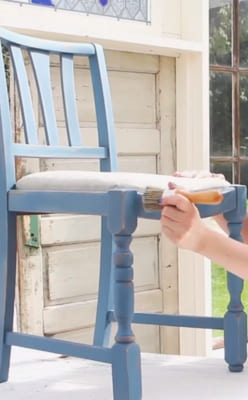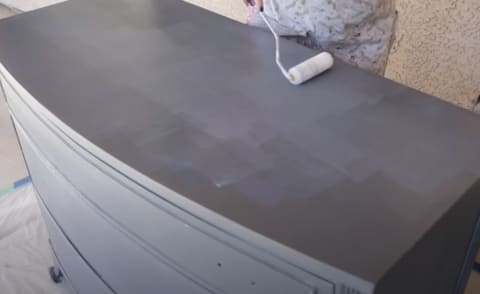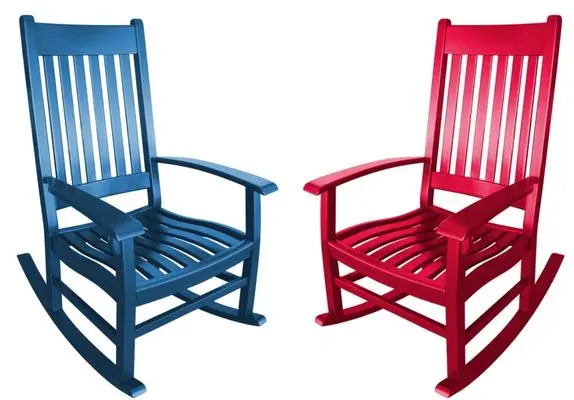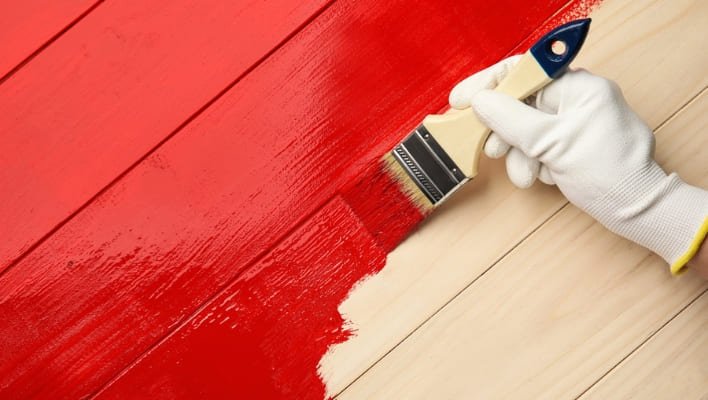Choosing between wax and polyurethane for your wooden furniture can be confusing. You might wonder which one is better. In this explanation, we’ll make it clear: Wax and polyurethane are like two different superheroes for your furniture. They protect it and make it look good, but in their own unique ways.
Imagine wax as a friendly shield. It covers your furniture, so it doesn’t get dirty or damaged easily. It also gives your furniture a nice shine, making it look even better. Plus, it helps your furniture stay strong against the wear and tear of time.
Now, think of polyurethane as another superhero, a bit like Iron Man’s suit. It’s tough and strong, making your furniture almost invincible. It keeps stains and damage away and makes your furniture look sleek. It’s like a heavy-duty protector for your precious wooden pieces.
So, the choice between wax and polyurethane is like deciding which superhero suit your furniture needs. It depends on your furniture’s specific needs and what kind of look you want. By the end of this explanation, you’ll have a clear idea of which “superhero” topcoat to choose for your furniture project.
Table of Contents
- Which is better wax or polyurethane? (Quick Summary)
- Comparing Wax vs Polyurethane Furniture
- finishing wax On Furniture
- 1. Types of Wax:
- 2. Appearance:
- 3. Application:
- 4. Protection:
- 5. Maintenance:
- How to use wax on furniture?
- What is the best wax to use over polyurethane?
- Polyurethane Top coat on painted furniture
- Appearance:
- Application:
- Protection:
- Maintenance:
- How to Apply Polyurethane On Furniture?
- Can I put polyurethane over wax?
- What is better wax or varnish?
- What is the advantage of wood wax?
- How long after polyurethane can i wax?
- Conclusion:
- Martina Hitchcock
Which is better wax or polyurethane? (Quick Summary)
Polyurethane is known for its strong resistance to moisture, heat, and wear, making it a favored option for surfaces in high-traffic areas and furniture that needs long-lasting protection. Nevertheless, it’s worth noting that polyurethane often provides a glossier finish, which might not suit the aesthetic preferences of everyone.
Conversely, wax provides a softer, more traditional finish. It imparts a warm, soft sheen to wood and is simpler to apply compared to polyurethane. Wax is suitable for furniture or surfaces subjected to lighter use. While it can enhance the natural beauty of wood, regular reapplication is necessary to uphold its protective qualities.
Comparing Wax vs Polyurethane Furniture
| Characteristic | Wax Finish | Polyurethane Finish |
| Appearance | Soft, matte sheen | Clear, glossy finish |
| Application | Easy for DIYers | Requires more steps |
| Protection | Moderate | Excellent |
| Maintenance | Frequent reapplication | Low maintenance |
finishing wax On Furniture

Wax topcoats are an excellent choice when it comes to safeguarding and perfecting furniture. They offer a better finish compared to leaving your furniture without a topcoat.
Here’s a deeper dive into furniture wax sealer:
1. Types of Wax:
Oil-Based Wax: This type of wax is known for its rich, lustrous finish. It deepens the wood’s color, providing a warm, antique-like appearance. It’s a great choice for pieces with intricate detailing.
Water-Based Wax: Water-based wax, on the other hand, is less likely to alter the wood’s color. This makes it a practical option for modern, lighter-colored furniture.
2. Appearance:
Unlike some finishes that produce a high gloss, wax offers a soft, matte look.
3. Application:
You have the flexibility to apply wax using either a cloth or a brush, allowing for a personalized touch in the application
4. Protection:
Wax does provide a certain level of protection against moisture and minor wear and tear, but it is not as long-lasting as polyurethane. This means it’s better suited for pieces with less exposure to heavy use or moisture.
5. Maintenance:
One of the considerations with wax finishes is the need for periodic reapplication. Generally, you’ll want to re apply wax every few months to maintain both its appearance and protective qualities. This regular maintenance ensures that your furniture continues to look its best.
Here are the best wax topcoat to make your furniture paint shiny.
How to use wax on furniture?
In this experiment, I used supplies like a Country Chic Paint wax brush (the larger one), natural wax, and lint-free cloths to seal a painted and distressed chair, as shown in the picture below. Read more distressing techniques in detail.

Applying Wax:
- Begin by taking your Country Chic Paint wax brush and dipping it into the natural wax.
- Apply the wax to both the wood and the upholstery of your furniture.
- It’s important to note that Country Chic Paint’s natural wax is safe to use as it contains no solvents, chemicals, or artificial dryers, making it suitable even for children’s furniture.
- Depending on the temperature in your workspace, the wax might be a bit hard. If you need it softer, consider microwaving it for a few seconds.
- I chose to apply the wax not only to the painted wood but also to the painted fabric to soften it up. You can use a lint-free cloth for application as well, but I found the wax brush more convenient, especially for reaching into nooks and crannies.
Buffing:
- After applying the wax all over your project, it’s time to start buffing. Use a lint-free cloth for this step.
- Remember that the wax doesn’t contain chemical dryers, so it might take a while to cure. Apply it sparingly and buff it thoroughly until it no longer feels tacky.
- Once you’ve finished buffing, your piece can be used right away.
- While Country Chic Paint doesn’t necessarily require a topcoat, our natural wax provides a more professional-looking finish. For projects like tabletops or kitchen cabinets, I would recommend using tough coat for a more durable finish, as natural wax is ideal for fine furniture finishes.
What is the best wax to use over polyurethane?
Paste wax is best used as a polishing agent to enhance the appearance of an already established finish, including lacquer, varnish, shellac, polyurethane, or even oil-based finishes.
Learn more about the differences between Polyurethane Vs Lacquer.
Polyurethane Top coat on painted furniture

Polyurethane is a contemporary, synthetic finish that offers exceptional durability and protection for furniture. It’s available in two main types: oil-based and water-based. Let’s delve into the details:
Appearance:
Polyurethane creates a transparent and shiny look that improves your furniture’s attractiveness. It’s versatile, allowing you to choose from different sheen levels, ranging from a subtle satin to a high gloss shine.
Application:
While applying polyurethane may be a bit more intricate than some other finishes, it’s well worth the effort. Typically, multiple coats are required, with sanding in between, to achieve a flawlessly smooth finish.
Protection:
Polyurethane is really good at keeping your furniture safe. It forms a protective layer that effectively guards your furniture against moisture, scratches, and various forms of wear and tear. It’s especially helpful for pieces that get a lot of use.
Maintenance:
Polyurethane stands out in terms of low maintenance. Once you put polyurethane on your furniture the right way, you don’t need to worry about it for a long time.
However, there are some considerations to keep in mind:
- Streakiness with Water-Based Products: When using water-based polyurethane on dark paints, there’s a potential for streakiness if not applied carefully.
- Yellow Tint with Oil-Based Products: Oil-based polyurethane can sometimes develop a yellowish tint over time.
How to Apply Polyurethane On Furniture?

In this project, I decided to give my old dresser a makeover, aiming for a more modern look that could withstand the rough treatment it would get in my twin girls’ room. I had already painted the dresser, and now it was time to apply a durable topcoat to protect the finish. I chose the Varathane Triple Thick Polyurethane for the job.
To start, I gathered my painting tools, including a foam roller, foam paint brush, and an old brush. The foam roller was my primary choice as it’s disposable and works well with this type of top coat. I also appreciated that this polyurethane had an advanced self-leveling formula, making it easy to apply and promising ultimate durability in a single coat.
Note: When deciding between spray paint and brush paint, it’s essential to consider the specific requirements of your project.
Before applying the top coat, I ensured the dresser’s surface was clean to prevent trapping any dust or particles underneath the finish. The key was to work quickly and smoothly in the same direction as the wood grain to achieve the best results.
As I painted, I noticed that roller marks were visible initially, but I hoped they would diminish as the polyurethane dried. Working quickly was essential, as polyurethane dries relatively fast, and you don’t want to reapply it on partially dried areas.
For detailed areas and crevices, I used the foam paintbrush, making sure not to overload it to avoid drips. I also shared a useful tip to prepare the workspace by using a leaf blower to remove dust and particles, creating a cleaner area to work in.
After finishing the first coat, I moved on to the drawers, where I encountered some detailed sections. Initially, I used the foam paintbrush, but I found that the foam roller worked well for these areas too.
A month later, I provided an update on the dresser’s performance. The Varathane Triple Thick Polyurethane had proven to be highly durable. It resisted pen scribbles and withstood the daily wear and tear from my active twin boys. I was impressed with its performance and ease of application, and I recommended it for high-traffic projects.
However, I noted that the finish wasn’t entirely matte; it had a slight satin sheen, so if you’re looking for a true matte finish, you might want to consider a different product. Overall, I was pleased with the results, achieving a modern look that was both stylish and practical for my girls room.
Note: I tested another product General Finishes Water-Based Topcoat for various wood finishing projects, and it consistently performs excellent. So, you can give it a try as well.
Can I put polyurethane over wax?
Generally, it is not advisable to apply wax-based products on surfaces finished with oil or polyurethane.
Applying polyurethane over wax can pose issues. The polyurethane may not adhere properly to the wax-coated surface, leading to problems such as peeling or a cloudy finish. When transitioning from wax to polyurethane, it is generally recommended to completely remove the wax, sand the wood, and then apply polyurethane for a more secure and long-lasting finish.
What is better wax or varnish?
Varnish, like polyurethane, forms a hard protective layer on the wood’s surface, offering robust durability and moisture resistance. The basic difference between wax and varnish lies in their appearance and application. Varnish often yields a glossier finish, while wax imparts a softer sheen. Varnish is generally more challenging to apply and may require sanding between coats for a smooth finish.
What is the advantage of wood wax?
Wood wax serves several purposes, including enhancing the appearance of wood and providing a degree of protection. Some benefits of using wood wax include:
- Enhanced Aesthetics: Wax can enrich the wood’s color and bring out its innate beauty, lending a warm and inviting look.
- Repairability: Wax is relatively straightforward to repair. Minor scratches or imperfections can often be rectified by reapplying wax to the affected area.
- Low Toxicity: Many wood waxes have low levels of toxic fumes, making them a more environmentally friendly choice.
How long after polyurethane can i wax?
If you’ve recently applied polyurethane to a wooden surface, it’s generally advisable to wait for full curing, which can take up to 30 days. Applying wax too soon can trap solvents beneath the wax, leading to potential issues. Once the polyurethane is completely cured, you can apply wax for added protection and a different visual effect.
Conclusion:
The choice between wax and polyurethane for your furniture finish ultimately depends on your priorities. If you value a natural, matte appearance and don’t mind a bit more upkeep, wax might be your preferred option. If you prioritize durability and minimal maintenance for your furniture, polyurethane is the ideal choice. To determine the best option, carefully assess your furniture’s requirements and consider your personal preferences.
In the end, both finishes have their merits, and the right one for you will depend on your unique circumstances. Remember that proper application and preparation are key to achieving the desired results, whichever finish you choose

Martina Hitchcock
Martina Hitchcock is a versatile author with expertise in different fields. As a paint sprayer expert, she has in-depth knowledge of paint spraying techniques, tools, and equipment. Martina is also an experienced home remodeler who has worked on various projects, including kitchen and bathroom renovations, flooring installations, and room additions. Her knowledge of home improvement and remodeling is extensive, and she enjoys sharing her insights and tips with readers. You can follow her on Facebook.


